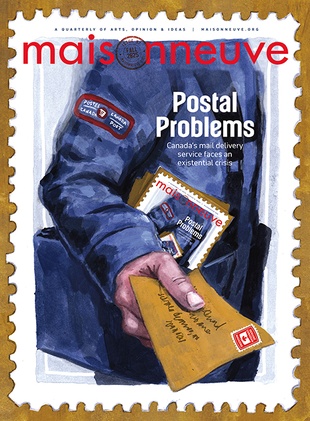A Cult Classic
Noi the Albino, a film
I have never been to Iceland but I understand black tulips grow there. Also—with the timing that comes of happy accident—I have been reading Halldór Laxness’ epic novel Independent People. Its species of grimness is such that when things really get dire all one can do is laugh. It begins with our hero, the crofter Bjatur, taking his new wife to his remote dwelling, which, basically, is house and barn rolled into one. A chapter later, she complains bitterly about there being nothing to eat but dried catfish; she pines for meat, to which her horrified husband cries, “Meat? Meat in the height of summer?”
“Listen, Rosa dear, I do hope there’s nothing wrong with your nerves?”
“Can we possibly buy a cow, Bjatur?”
“A cow?” he repeated in gaping astonishment. “A cow?”
“Yes,” persisted his wife stubbornly, “a cow.”
That night, Bjatur dreams of cows cropping his grass, the rare grass he reserves for his precious sheep, and in the dream the cows, those evil creatures, charge at him. When morning comes and he goes to relieve himself outside, he mutters, “In the name of Father, Son, and Holy Ghost: sooner a coffin than a cow.”
So what happens when one adds to this bleak though savagely beautiful world a punk aesthetic, a dash of Kierkegaard and a white-skinned boy with shaved head and eyebrows? You get Nói Albínói (or, in English, Nói the Albino). Only the country that produced Björk could have produced this strange and deeply engaging film. The seventeen-year-old Nói, laconically played by Tómas Lemarquis, is a cross between a young David Bowie and a character from The Simpsons, which the film’s writer and director, Dagur Kári, cites as a seminal influence. Surely no other movie in recent times is as firmly destined for cult status. A cult film, though, in order to be one, must not have too many admirers and, in this respect, Nói Albínói may already be in trouble since it has garnered awards at several festivals.
The movie starts with an icy chord played on an electric guitar, a struck chord that signals the workings of fate. (The music is provided by Kári’s own rock band, Slowblow, and is thoroughly effective.) The opening frame is of the snow-covered mountain that provides the film’s deus ex machina. We are, in fact, in the north of Iceland, on a fjord that in winter is cut off from the mainland—the location is
so remote it may as well be another planet, with the young Nói its alabaster pale species. As Laxness’ novel makes clear, the hostile Icelandic landscape is teeming with ancient gods that one disturbs only at one’s peril. One wonders, then, whether it is wise of Nói to be up in the mountain idly firing his gun at massive icicles. What sleeping deity will he awake?
We first encounter Nói inside his grandmother Lina’s house. Lina, superbly played by Anna Fridriksdóttir (who, when not acting, delivers the post in Dagur Kári’s neighbourhood), is busy melting snow in the kitchen sink. Snow is the key ingredient in this film, both thematically and in a sculpturally visual sense. If Nói has or ever had an earthly mother she is never mentioned. His father, Kiddi, lives alone in a prefab with his cat Elvis; often stupefied with drink, he comes to life only in front of a microphone (his rendition of “In the Ghetto” in the local karaoke bar is a memorable one). The actor who plays Kiddi, Thröstur Leó Gunnarsson, alternates his acting career with fishing—which fills in nicely for an Icelandic film industry still in its infancy. What is it about infancy, though, that its products should so brightly shine? Anyway, Nói is not a gifted student, quite the opposite, in fact, although one suspects he is quite smart. Certainly he’s good at solving various puzzles; he outfoxes the school psychiatrist and everybody in the village, except his math teacher, who treats him with remarkable tolerance. At home Nói retreats into the world he has made for himself, a cubbyhole beneath the floorboards, which is both tomb and refuge.
The question is, will Nói escape this world, or, alternatively, will the world in which he is so oddly cocooned
finally release him? Such efforts as he makes to escape provide good entertainment value. The film offers more than that, however. Lina arranges for her grandson to see Gylfi the fortune teller to determine whether Nói has any kind of future. (Gylfi’s daytime job is as a welder and we encounter him first in his protective visor; it’s a lovely demonstration of Icelandic economic versatility.) The message he finds at the bottom of Nói’s cup abruptly raises the film’s stakes. The lovely young Iris (Elín Hansdóttir), who works at the filling station, is the figure who provides Nói with the possibility of
another life. Will she leave with him, though, when the time comes? There is a touching scene in a zoological museum, presumably the village’s one tourist site. Inside, Nói and Iris discover a map of the world with buttons one pushes in order to light up different places. There is no light for Iceland but there is one for Hawaii. Later, Lina gives Nói a plastic viewfinder for his birthday and silently he dwells upon images of palm trees in a Polynesian paradise, which at the end of the film are what provide him and the audience with some hope for the future.
The film is, for much of its length, one of the funniest I have seen in a long time, but never once does its director fall into the trap of making his characters laugh or so much as smile. If Nói Albínói can be said to be about the workings of fate, then Kári has the good sense not to force his theme. As with all art that is truly subtle, the film’s ultimate conclusion is reached in one’s own silences. What makes this film what it is—and I offer this as a friendly challenge—is that, whatever it is, it is unrepeatable. Where Kári excels, and in this he may prove to be a master, is in finding humour in
grim places and, as surely as one might spin thread from fleece, in drawing from that humour a tragic sense of life. Might I suggest he tackle Independent People?





